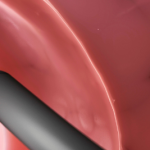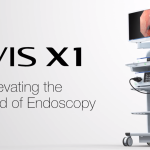ACHALASIA
Achalasia is failure of the muscle (sphincter) in the lower food pipe (oesophagus) to relax.
Normally when we swallow waves of muscle contractions (peristalsis) push the food down the oesophagus into the stomach. For this to happen the lower oesophageal sphincter needs to relax. The lower oesophageal sphincter is normally closed at rest to stop food moving up into the oesophagus (reflux).
Failure of the muscle to relax results in an inability to swallow which causes a buildup of food in the oesophagus. A secondary effect is that the peristaltic contractions stop working and the oesophagus becomes enlarged and floppy (mega-oesophagus).
What are the symptoms of achalasia?
- Difficulty swallowing food and drink
- Pain when swallowing
- Regurgitation of undigested food
- Coughing, especially when lying down
- Loss of weight
- Pneumonia if food is inhaled into the lungs

How does your doctor diagnose achalasia?
- Your doctor may have a suspicion that you have achalasia after taking your medical history.
- Further tests however are required and they include the following:
- Barium swallow which is an x-ray after swallowing a liquid which contains barium which shows up as a white shadow on an x-ray film.
- Oesophageal manometry which measures the pressure of contractions along the oesophagus using a thin plastic tube passed through the nose. In achalasia there are no contraction waves down the oesophagus but usually high pressure without relaxation at the lower oesophageal sphincter.
- Gastroscopy (panendoscopy) during which a specialist endoscopist passes a thin flexible viewing scope through the mouth to view the oesophagus and sphincter. This is usually done under sedation and is not painful or uncomfortable.
How can achalasia be treated?
- Medical therapy: Some medication can help in relaxing the lower oesophageal sphincter. This is usually not very successful and frequently only provides temporary relief.
- Mechanical stretching: The lower oesophageal sphincter can be stretched while performing a gastroscopy . A rubber tube or balloon is used for this.
- Botox injection: Botulinum toxin which causes temporary muscle relaxation can be injected into the lower oesophageal sphincter.
- Surgery is required in serious cases and is usually very successful.




